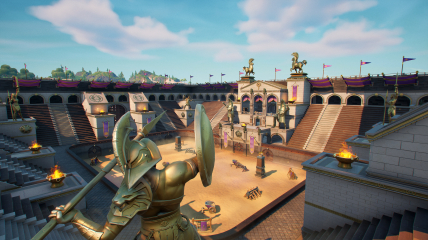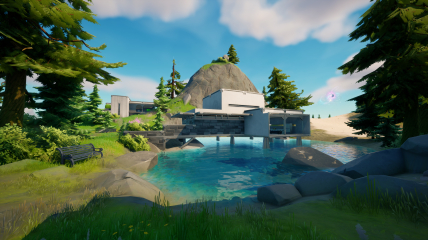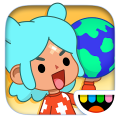Fortnite
As an experienced gamer who’s seen the transformation of multiplayer shooters across the past two decades, few titles have shaken up the landscape quite like Fortnite. From its inception in 2017, Fortnite rocketed out of the gates, offering a unique blend of dynamic building, rapid-paced combat, and an infectious aesthetic that took both casual players and esports stars by storm. With a staggering active player count that spans age groups and geographies, Fortnite isn’t just a videogame—it’s a cultural phenomenon, a digital playground where communities build, compete, and collaborate. In this review, I’ll dissect not just why it matters, but why even after so many years and countless imitators, Fortnite continues to be downloaded, played, and discussed across all corners of the internet.
The Essence of Fortnite: More Than Just Battle Royale
What began as a PvE (Player vs Environment) venture with “Save the World” quickly became synonymous with the battle royale mode, where 100 players skydive onto a sprawling island, scavenge, construct, and strive to outlast the rest. While the “last player standing” core remains, what truly separates Fortnite is its build mechanic—a system that elevates strategy far beyond pure marksmanship. In Fortnite, survival means adapting on the fly: constructing walls for cover, ramps to scale cliffs, and ingenious fortresses mid-firefight.
The freedom is exhilarating—the terrain is your canvas. Imagine running from the encroaching storm, hearing footsteps, and in an instant crafting a protective cocoon or gaining vertical dominance with lightning-fast builds. It’s a dance of reflexes and creativity, and for anyone willing to put in the hours, there’s always a new trick or tactic to learn.
Onboarding: Download and Installation Experience
Even as a veteran gamer, I appreciate a streamlined onboarding process, and Fortnite remains accessible to new and returning players alike. Whether you opt to download for free on PC via the Epic Games Launcher, install on PlayStation, Xbox, or Nintendo Switch, or even load up the mobile version (now returning to iOS through cloud gaming), you’ll find a relatively smooth install pipeline. Updates are frequent and hefty, which can be irksome for bandwidth-strapped users, but the modular update system helps mitigate extended downtime.
One standout feature is Fortnite's “unblocked” accessibility via browser through Xbox Cloud or NVIDIA GeForce NOW. This leverages cloud infrastructure to let players dive into a live match even on low-powered systems, Chromebooks, or environments that might otherwise block installs (like schools and some workplaces). This radical accessibility, combined with an easy UI, means the only real barrier is the courage to drop straight into the whirlwind fray of a Fortnite island.
Platforms and Play Styles: Bridging Generations and Devices
Few contemporary titles rival Fortnite’s ubiquity. It’s available free to download and install on just about every mainstream gaming platform: Windows PC, Mac (with some limitations), PlayStation 4 and 5, Xbox One and Series X|S, Nintendo Switch, and select Android devices (the iOS journey is more complicated but not impossible via cloud streaming). This ensures a vast, cross-generational player base, seamlessly integrated via cross-platform play and progression.
Whether you’re seeking couch co-op on a console, touch controls on mobile, or 240Hz precision on a gaming rig, Fortnite is engineered to suit. Controller aim assist continues to be hotly debated, but the core experience remains harmonized. Voice chat, text chat, and quick emote systems make Fortnite feel communal, whether you’re coordinating squad tactics or just laughing through a session of Creative mode.
The Live-Service Model: Seasonal Content and Evolving Worlds
Unlike static shooters of yesteryear, Fortnite thrives on metamorphosis. With each season (and now extensive “Chapters”), players are introduced to new map biomes, mechanics, weapons, and collaborations (from Marvel heroes to Dragon Ball Z warriors). These regular injections of content reframe the meta, shaking up strategies and fueling constant speculation.
Epic Games executes these pivots with an impressive flair—massive in-game events alter the island in real time, evolving the Fortnite narrative and keeping the world feeling alive. Drop into a new season and you’re not just replaying old matches with a fresh coat of paint; you’re faced with new mobility mechanics (grappling hooks, launch pads), mythic-grade gear, or even “no build” playlists for those who prefer pure shooting over rapid-fire architecture.
Cosmetics, Customization, & Monetization Ethics
At the heart of Fortnite’s longevity lies its extensive cosmetics ecosystem. The game is wholly free to download and play: every core gameplay element—Victory Royales, progression, battle pass participation—remains untouchable by real-money purchases. However, the breadth and appeal of cosmetics is staggering, spanning hundreds of skins, glider designs, emotes, and even lobby music. Epic’s monetization model hinges on pure aesthetics, with frequent collaborations that appeal to pop culture fans (think Ariana Grande concerts, Spider-Man suits, or football club tie-ins).
The Battle Pass system offers outstanding value for those wishing to engage deeper, granting access to V-Buck rewards (which can often recoup the cost for committed players). There are fairly regular free cosmetics for those unwilling to pay—Epic delivers enough leeway to ensure “pay-to-win” never enters the conversation.
Gameplay Dynamics: Sharpened Over Time
Fortnite’s defining gameplay loop is razor-sharp—drop, loot, build, outlast. But beneath that surface simplicity lies an evolving test of skill, spatial awareness, quick thinking, and resource management. As seasons progress, new weapons and gadgets are introduced or vaulted, reshaping the meta and demanding players adapt.
For veterans, skill ceilings skyrocket. Master builders are capable of creating near-impenetrable strongholds in seconds, executing advanced editing to outmaneuver rivals. Yet, Fortnite manages to offer entry points for all skill levels, in part thanks to innovative playlists (such as Team Rumble or Zero Build modes) and a robust matchmaking system that attempts to pair players of similar experience.
The gunplay has become tighter over the years, with a wide range of weapons each demanding different tactics. Snipers, SMGs, shotguns, and now even vehicles and mythics, all shift the battlefield dramatically, but polished movement and clever third-person camera work keep chaos readable. Add in “Fishing,” “Reboot Vans,” or even environmental hazards, and you’ve got a tactical ballet of risk and opportunity.
Community, Mods, and Unofficial Creations
While Fortnite doesn’t officially support traditional mods or cheats, the introduction of Creative mode in late 2018 brought the prospect of user-generated maps and custom games. Players can now craft their own deathmatches, obstacle courses, or even RPG-lite adventures, empowered by Epic’s own Unreal Engine toolkit. This decentralized creativity is Fortnite’s sleeper advantage.
However, the mainline experience remains heavily curated—Epic comes down hard on cheats and hacks, maintaining a robust anti-cheat infrastructure. Community guides and map codes function akin to “mods,” delivering offbeat or nostalgic experiences (replicas of classic shooters, parkour gauntlets, etc.), all within Epic’s walled-garden framework. It’s not “modding” in the sense of altering the core game, but it keeps play fresh and ever-changing.
Accessibility and Inclusivity: Lowering the Barriers
One defining strength of Fortnite lies in its approach to accessibility. The visual style is bright and readable rather than over-cluttered. Substantial work has gone into menu narration, custom control schemes, and audio/visual cues—meaning the game is more approachable for players with disabilities than many of its contemporaries.
Unblocked accessibility is also not an afterthought. Epic and cloud partners have enabled browser-based launch and touch controls to reach players on restricted networks or legacy devices (assuming some internet stability), making Fortnite arguably the most “unblocked” major shooter on the web today.
Learning Curve and Skill Progression
What stops Fortnite from being merely a fun distraction is its profound learning curve. If you jump straight into a match after download, expect to be overwhelmed. Building under duress is chaotic for newcomers, and the sheer pace can be punishing. Yet, onboarding challenges, tutorial islands, and Creative practice courses have gotten substantially better, meaning you can hone skills without pressure.
No build modes also let players ease into core shooting and exploration mechanics before advancing into “full” Battle Royale. The steady drip of free and purchasable training tools, as well as YouTube guides and in-game events, produces an ecosystem where learning feels rewarding, not daunting.
Changing the Game: Live Events and Evolving Storytelling
No other free-to-play shooter has blurred the line between gaming and live spectacle quite like Fortnite. From black hole shutdowns and map-busting meteors to virtual concerts and surprise collaborations, the sense that anything could happen at any time is near-constant. These events draw huge online crowds—and every patch day brings with it a fresh round of speculation and excitement.
Events like “The End,” “Galactus Battle,” or virtual concerts are not mere gimmicks but moments that define the zeitgeist. Epic has redefined event gaming from passive content drops to participatory phenomena, with oil-slick marketing and technical polish matched by few in the industry.
Fair Play: Cheats, Exploits, and Moderation
Fortnite’s stance on cheats and hacks is as strict as it is transparent. Epic enforces bans rapidly, and the anti-cheat system is robust enough that exploits and unofficial mods are quickly squashed. This creates a mostly level playing field—rare in the modern free-to-play world—and gives competitive and casual players alike a reason to invest time in improvement rather than searching for backdoors or unbalanced mods.
Third-party sites or hacks promising cheats are not only illegal—they’re dangerous. Stick to the official ecosystem, whether you’re after the latest creative map codes or looking to play unblocked on a new device.
Performance and Technical Optimization
Running Fortnite today is a markedly smoother experience than even a year or two ago. Optimization for low- and mid-tier rigs has enabled wide accessibility. On a gaming PC, framerates soar into the triple digits, but even aging consoles or modest laptops (via cloud or local installs) deliver a respectable experience. That said, battle-size and graphical density can still lead to dips if your system lags behind, and as new tech is added, some legacy hardware lags further in behind.
Frequent, sometimes enormous, downloads are the tradeoff—the install size can balloon rapidly, so be prepared for an evolving game folder. Patches optimize, but Epic’s quest for content means you’ll need to manage disk space and bandwidth proactively.
Free to Play—But At What Cost?
Fortnite’s business model is, for the most part, a paragon of the free-to-play shooter landscape. No weapon, map, gadget, or mechanic is locked behind a paywall. Spending never gives direct gameplay advantage. The only real “cost” is time—time spent downloading, updating, practicing, and (for the style-conscious) unlocking skins before they’re vaulted.
Of course, FOMO is a real concern. New skins rotate rapidly, and limited-time collabs can inspire impulse purchases. For some, the compulsion to keep up with cosmetic trends outweighs the gameplay imperative—but most players can ignore the Shop entirely and still have the full experience, all without spending a cent.
For the Newcomer: Is It Too Late to Jump In?
The question many prospective fans ask: Is Fortnite too deep in its lifecycle to be welcoming? The simple answer: No. While “OGs” have a head start, the continual influx of new mechanics and the introduction of Zero Build mode have effectively lowered the barrier for new blood.
Frequent events, new playlists, and low-stakes Creative islands ensure there’s always a place to play, explore, and practice irrespective of your main Battle Royale prowess. And with broad download and unblocked accessibility (including school/work-safe browser modes), sampling Fortnite is easier than ever—if you’ve ever been tempted to try, there’s never been a better moment to install and test your mettle.
The Esports and Streaming Scene: Always Evolving
No discussion of Fortnite is complete without mention of its esports and streaming ecosystem. While the competitive scene isn’t the juggernaut it was in 2019’s World Cup years, it remains vibrant, with collegiate, regional, and World Cup-style tournaments drawing high-level players and massive audiences. The fast pace, skill ceiling, and unpredictability make Fortnite a strong spectator esport.
Meanwhile, streamers and YouTubers continue to generate millions of views with Fortnite content, from competitive breakdowns to meme-filled Creative lobbies. Epic’s creator codes and regular community challenges ensure the content pipeline never runs dry, and the symbiosis between players, spectators, and the developer pushes the culture ever-forward.
What Could Be Improved: The Honest Critique
No game is above criticism, and Fortnite is no exception. For one, the build mechanic, while ingenious, poses a sharp entry barrier for newcomers. The visual barrage of rampant skins, glows, and particle effects can feel overwhelming—occasionally compromising visual clarity. Many seasoned players bemoan the increasingly bloated loot pool, and while the emote culture is generally lighthearted, toxicity can rear its head in voice chat.
Update pacing sometimes fractures the player base—hardcore competitors want fewer, more balanced changes, while casuals long for chaos and unpredictability. Finally, the game’s monumental install size and frequent patches can be a real hurdle for those with limited storage or slower connections.
The Final Verdict: Why Fortnite Still Matters
Fortnite isn’t merely a survivor in the cutthroat world of free-to-play shooters—it’s a genre-defining pioneer that sets the agenda for competitors. Its commitment to innovation, accessibility, community, and fun make it both a training ground for aspiring esports pros and a casual hangout for newcomers or groups of friends. While its relentless pace and visual chaos might not be for everyone, and the learning curve can be daunting, there are few better ways to test your competitive mettle or simply get lost in digital mayhem for an hour or two.
So, should you download, install, and play Fortnite in 2025? Without reservation. Whether on a maxed-out gaming PC, a controller-wielding console, or a Chromebook leveraging unblocked browser play, Fortnite remains what it always was: a world in constant flux, ready for you to claim your moment of glory. It’s free, fair, and feverishly fun—and above all, it’s still the battle royale to beat.
Pros/Cons
Pros:
- Innovative build mechanics distinguish gameplay from other shooters
- Completely free to play with no pay-to-win elements
- Regular seasonal updates keep the world fresh and engaging
- Cross-platform compatibility allows true social play across devices
- Accessible via cloud gaming and browser for easy, unblocked access
- Extensive cosmetic and customization options
- Thriving Creative mode empowers community-generated content
- High skill ceiling and rewarding progression for dedicated players
Cons:
- Steep learning curve, especially with advanced building
- Large download/install size and frequent hefty updates
- Visual and audio clutter can reduce clarity in chaotic fights
- Update cadence sometimes fragments the competitive scene
- Occasional matchmaking imbalances
- In-game purchases can foster “FOMO” even though they’re cosmetic-only
How to download Fortnite and Play on Any Platform
Fortnite is completely free to download and accessible on a huge range of devices. Get started by visiting the official Epic Games website or respective console stores, where you can grab the installer for Windows PC, Mac, PlayStation, Xbox, and Nintendo Switch. Android players can sideload from Epic’s mobile site; iOS access is possible via supported cloud gaming platforms. Installation is straightforward: follow on-screen prompts after download, sign in with your Epic account, and you’ll be playing within minutes. Recommended specs for PC are an Intel Core i3, 8GB RAM, and a DX11 GPU; Android devices require at least 4GB RAM and Adreno 530+.
Cheats and mods are not permitted in official play, though community maps and experiences are available via Creative mode. Fortnite can be played unblocked using cloud streaming services like Xbox Cloud or GeForce NOW, even on school or work networks with suitable browsers. Always download and install only from official sources for safe, uninterrupted play.























